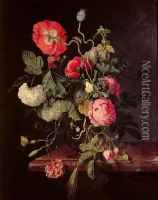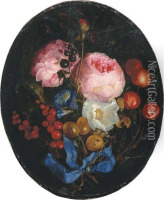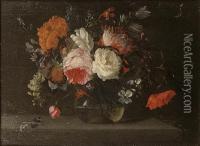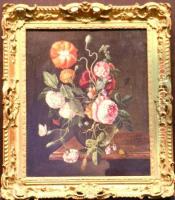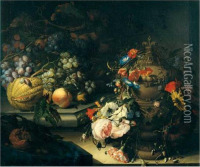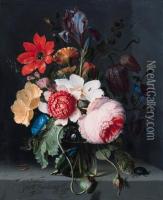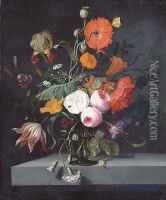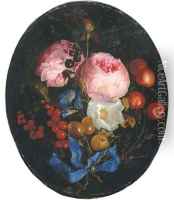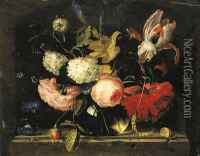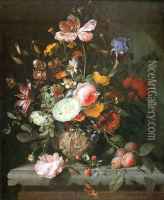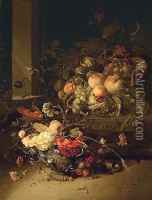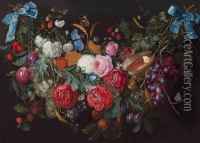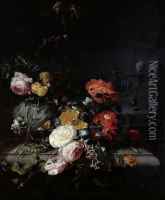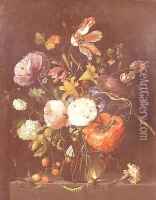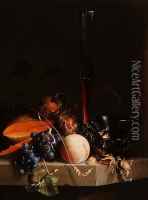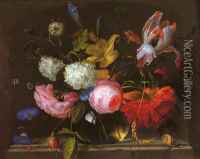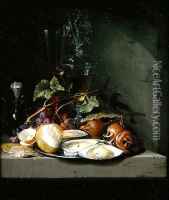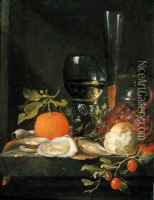Jacob van Walscapelle Paintings
Jacob van Walscapelle was a Dutch Golden Age painter known for his still-life works, particularly his detailed and vibrant depictions of flowers. He was born in 1644 in Dordrecht, the Netherlands. Little is known about his early life and training, but it is believed that he may have been influenced by the works of other Dutch still-life painters of the time, such as Jan Davidsz. de Heem.
Walscapelle's paintings are characterized by their meticulous attention to detail and rich color palettes. He often painted flower bouquets containing a variety of species, each rendered with botanical accuracy. The arrangements typically included both blooming flowers and those that were wilting, which not only showcased his technical skill but also served as a reminder of the transience of life, a common theme in still-life paintings of that era.
In addition to flowers, van Walscapelle also painted fruit still lifes and occasionally combined both elements. His work often featured insects and drops of water, adding to the realism and dynamic quality of his compositions. Despite the beauty of his paintings, he was not as prolific as some of his contemporaries, and today, his works are relatively rare.
Jacob van Walscapelle's contributions to art were recognized in his time, and he enjoyed the patronage of wealthy collectors. However, his fame did not reach the levels of some of the leading still-life artists of the Dutch Golden Age. He died in 1727 in Amsterdam, where he had spent the latter part of his life. His paintings continue to be admired for their exquisite detail and are held in various collections around the world, including prominent museums.
